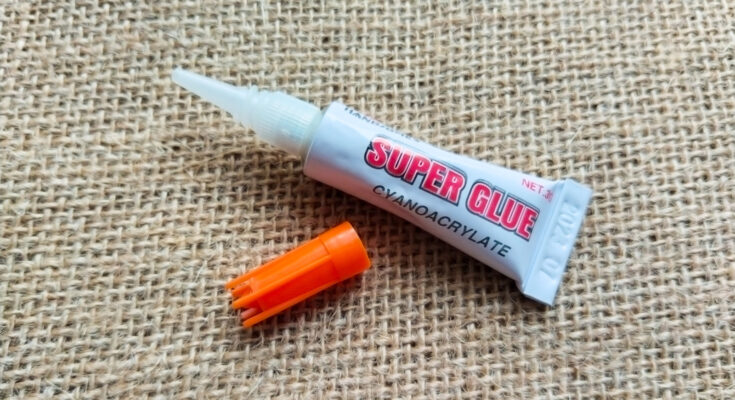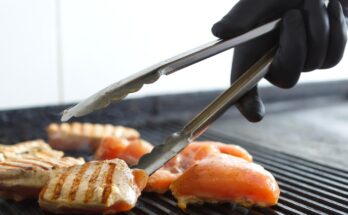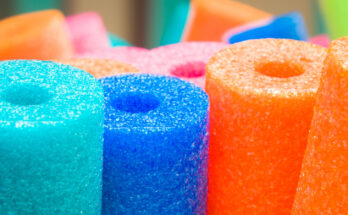Clever Super Glue Hacks That’ll Come In Handy Around Your Kitchen
We may receive a commission on purchases made from links.
Did you know that the average American spends more than 1,000 hours a year in their kitchen? As a result, kitchens tend to get a lot of attention, but they also get a lot of wear and tear. This means that if something in your kitchen is damaged or not working properly, you’ll probably want to get it fixed as soon as possible. Although the thought of having to fix something yourself can seem overwhelming, that doesn’t always have to be the case thanks to one of the most tried and true adhesives around — super glue. Whether you need to secure a loose handle or repair a damaged countertop, super glue could be exactly what you need.
Not only can some of these options provide affordable fixes for things that could otherwise be costly repairs, but they can also give some of the items in your kitchen a second chance as opposed to simply being thrown in the trash. Ready to see how super glue can come in handy around your kitchen? Keep reading to learn some clever super glue hacks you can use.
Use a food-safe super glue product to fix broken tableware
Picture this: You’re getting ready to serve up your favorite meal when you accidentally knock the plate off the counter and watch it break into several pieces. While it may seem like the end of the world (and your dinner), tossing out the plate isn’t your only option. Super glue might just be able to save the day.
All you need to do is pick up all of the pieces, clean and dry them, arrange them in the proper order, and add your glue. It’s important to note that not all super glue products are food safe, so it’s important to use a cyanoacrylate adhesive when repairing any items that will be coming in contact with food. This is a type of super glue that is made without toxins, making it safe to use on dishes and cups. However, while all cyanoacrylate adhesives are non-toxic, not all of them are food safe. You need to choose one that is labeled “food safe” by the FDA specifically. Such an example is Permabond ET5145. If you need to repair other cookware, such as a broken mug handle, you do not need to worry about using food-safe super glue.
Secure loose cabinet hardware
Dealing with loose cabinet hardware can be frustrating. Not only can it take away from the aesthetic of your space, but it can also impact functionality and lead to increased wear and tear. Fortunately, this isn’t a problem that you have to live with. Thanks to super glue, you can help keep that hardware in place.
Simply add a few drops of superglue in the hole where the screw is loose. While you can simply tighten it with a screwdriver, this hack is best used for screws with stripped threads that stay loose no matter how much you try to tighten them. To do so, simply remove the screw, add glue to its hole, and then quickly put it back in before it dries, allowing the adhesive to bond around the bolt. Just make sure to add no more than a drop or two and be careful not to get any glue on the cabinet itself. In general, you’ll want to avoid directly gluing the knobs/handles directly to the cabinet since they may need to be removed at some point if you want to paint or refinish your kitchen cabinets.
Repair refrigerator magnets
Refrigerator magnets can be a great way to add personality to your kitchen, especially if you DIY unique and meaningful ones. Unfortunately, though, the magnet and the backing can become separated over time. By putting a small dot of superglue on the back of the magnet, you can put it back together. Before taking out your adhesive, you’ll want to make sure that the magnet is clean and dry. You can use soap or rubbing alcohol to clean it. Then, apply a small dot of super glue to the back and reattach the backing by holding the magnet firmly in place.
Before returning your magnet to its beloved spot on the fridge, it’s important to make sure that the super glue has fully dried. If the backing is broken or cracked, you can use superglue to repair that as well. There are different kinds of glue you can use to get the job done, but experts recommend using cyanoacrylate or urethane adhesives, the latter of which is Gorilla Glue.
Fix that broken refrigerator seal
A broken or loose refrigerator seal may not seem like a big deal. But in reality, it can result in your appliance becoming less efficient, which can ultimately lead to a higher electric bill and faster wear and tear on your appliance. Needless to say, it’s something you’ll want to fix as quickly as possible. But is super glue the wonder fix to a broken fridge seal? As it turns out, yes, but with some caveats. While there are lots of adhesive options, professionals suggest using a cyanoacrylate superglue if your gasket is made from PVC, which most are. However, they can also be made from materials such as silicone or synthetic rubbers, on which the glue won’t work. It’s difficult to differentiate between them, so you will need to try repairing the seal with glue and see if it sticks.
You can apply a couple of drops of glue to the back of the seal and firmly press it up against the frame of the door until it’s secure. Remember to check your refrigerator seal every 12 months to ensure that it is not loose or damaged.
Fill in chipped countertops
Granite is one of the most popular kitchen countertop materials, and while it can be beautiful, it can also chip. Thankfully, that chip doesn’t have to become a permanent eyesore. Better yet, you can use super glue to repair the chip without having to call a professional. In order to do this, you need to clean the chipped area with acetone (nail polish remover) and let it air dry. After that, apply a small amount of super glue to the area, making sure it lies flush with the surface. If there is any excess glue once it dries, you can use a straight razor to remove it. If you have darker countertops, experts note that you may want to find a similarly colored Sharpie and color in the area.
In addition to granite, this method can also work on other natural stone countertops such as quartz and marble. But if your countertops are made from materials such as wood, Corian, or concrete, this method may not be a good fit for you.
Temporarily fix leaky pipes
Are you dealing with a leak in your kitchen and can’t have a plumber come out right away? A little bit of super glue can go a long way in providing a temporary solution for your leaky pipe. However, please note this should only be used in an emergency since the adhesive isn’t made to be waterproof. It can hold you over while the plumber fits you into their schedule for the day, but it likely won’t hold up for days. To try this hack, turn off the water, dry and clean the leaky area, and apply a little bit of super glue right on the crack. If you want a little extra reinforcement, you can apply baking soda to the glue while it’s wet to create a stronger bond. Once the glue is dry, turn the water on, and put your fix to the test.
A cyanoacrylate adhesive is the best option if you’re working with PVC pipe, while a gel-based super glue is best for dealing with rubber plumbing seals and/or connectors. This hack also works best on small cracks and holes rather than a sizable rupture.
Fix wobbly kitchen chairs
If you have wobbly chairs or stools in your kitchen, that hopefully won’t be the case for much longer. There are all sorts of clever ways to fix uneveness, from using a penny hack to fix wobbly furniture to utilizing a cork hack to straighten out a table. However, if the wobble in your chair is due to loose or damaged joints, super glue can be a great solution, and you won’t even have to take the chairs or stools apart. First, you need to identify the loose joint. Then clean the area with acetone. Once the area is dry, apply super glue to the loose joints. Try to avoid using more than you need, but if you accidentally overdo it, you can use acetone to wipe the excess glue away.
Since you don’t want your chair or stool to end up stuck to your floor, it’s a good idea to protect the area by putting down a cloth or some wax paper. Although there are multiple super glue options you can use, Wonderlokking Tite Chairs is a super glue product that was designed specifically for this purpose.
Use superglue with baking soda to fix small areas of missing grout
Foot traffic and normal wear and tear can cause the grout in your kitchen floors to deteriorate. In addition to being unsightly, missing grout can lead to other issues over time, such as loose tiles, water damage, and mold. The good news is that super glue can provide a quick and easy solution.
All you have to do is apply a small amount of baking soda to the area where the grout is missing. Then you can apply a few drops of super glue, adding more baking soda while the glue is still wet. Repeat the process until you’ve filed in all of the necessary areas and wipe away any excess glue or baking soda. Please note that this solution only works for fairly small amounts of missing grout, and it’s not a replacement for actually regrouting your floors.



